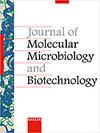Stable Isotope Probing Approaches to Study Anaerobic Hydrocarbon Degradation and Degraders
IF 1.2
Q2 Biochemistry, Genetics and Molecular Biology
引用次数: 23
Abstract
Stable isotope probing (SIP) techniques have become state-of-the-art in microbial ecology over the last 10 years, allowing for the targeted detection and identification of organisms, metabolic pathways and elemental fluxes active in specific processes within complex microbial communities. For studying anaerobic hydrocarbon-degrading microbial communities, four stable isotope techniques have been used so far: DNA/RNA-SIP, PLFA (phospholipid-derived fatty acids)-SIP, protein-SIP, and single-cell-SIP by nanoSIMS (nanoscale secondary ion mass spectrometry) or confocal Raman microscopy. DNA/RNA-SIP techniques are most frequently applied due to their most meaningful phylogenetic resolution. Especially using 13C-labeled benzene and toluene as model substrates, many new hydrocarbon degraders have been identified by SIP under various electron acceptor conditions. This has extended the current perspective of the true diversity of anaerobic hydrocarbon degraders relevant in the environment. Syntrophic hydrocarbon degradation was found to be a common mechanism for various electron acceptors. Fundamental concepts and recent advances in SIP are reflected here. A discussion is presented concerning how these techniques generate direct insights into intrinsic hydrocarbon degrader populations in environmental systems and how useful they are for more integrated approaches in the monitoring of contaminated sites and for bioremediation.稳定同位素探测方法研究厌氧烃类降解及降解剂
在过去的10年里,稳定同位素探测(SIP)技术已经成为微生物生态学领域最先进的技术,可以有针对性地检测和鉴定复杂微生物群落中特定过程中活跃的生物体、代谢途径和元素通量。为了研究厌氧烃降解微生物群落,迄今为止已经使用了四种稳定同位素技术:DNA/RNA-SIP, PLFA(磷脂衍生脂肪酸)-SIP,蛋白质-SIP和单细胞-SIP,通过纳米sims(纳米二级离子质谱)或共聚焦拉曼显微镜。DNA/RNA-SIP技术由于其最有意义的系统发育分辨率而被广泛应用。特别是以13c标记的苯和甲苯为模型底物,在不同的电子受体条件下,用SIP技术发现了许多新的烃类降解物。这扩展了目前对与环境相关的厌氧烃降解剂的真正多样性的看法。合成烃降解是多种电子受体的共同机制。SIP的基本概念和最新进展反映在这里。讨论了这些技术如何产生对环境系统中固有碳氢化合物降解物种群的直接见解,以及它们对监测污染地点和生物修复的更综合方法的用处。
本文章由计算机程序翻译,如有差异,请以英文原文为准。
求助全文
约1分钟内获得全文
求助全文
来源期刊

Journal of Molecular Microbiology and Biotechnology
生物-生物工程与应用微生物
CiteScore
3.90
自引率
0.00%
发文量
0
审稿时长
>12 weeks
期刊介绍:
We are entering a new and exciting era of microbiological study and application. Recent advances in the now established disciplines of genomics, proteomics and bioinformatics, together with extensive cooperation between academic and industrial concerns have brought about an integration of basic and applied microbiology as never before.
 求助内容:
求助内容: 应助结果提醒方式:
应助结果提醒方式:


